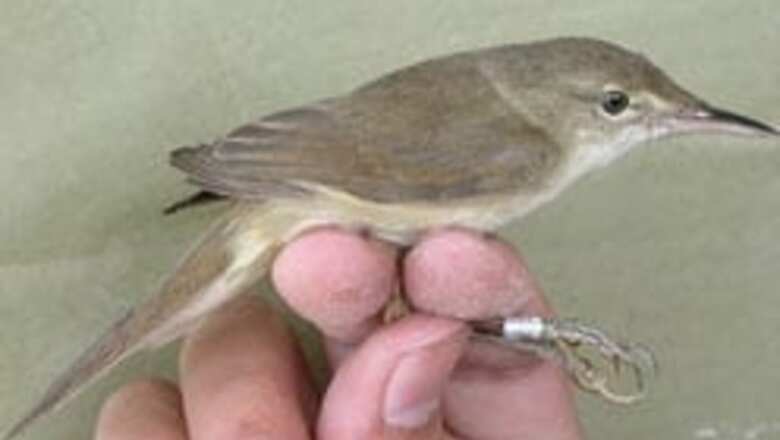
views
Bangkok (Thailand): A wetland bird that eluded scientists for nearly 130 years has been rediscovered at a wastewater treatment plant in Thailand, Birdlife International announced on Wednesday.
Little is known about the large-billed reed-warbler because it had not been seen since its discovery in 1867 in the Sutlej Valley of India.
Because it was so rare, scientists had long debated whether it represented a true species or was an aberrant individual of a more common species.
That debate appears to be settled after Philip Round, an ornithologist at Bangkok's Mahidol University, captured one of the birds on March 27, 2006, at a wastewater treatment center outside Bangkok, the conservation organization in Cambridge, England said.
"Although reed-warblers are generally drab and look very similar, one of the birds I caught that morning struck me as very odd, something about it didn't quite add up," Round said in a statement. He said he noticed the bird's unusually long beak and short wings.
"Then, it dawned on me. I was probably holding a large-billed reed-warbler," he said. "I was dumbstruck."
To confirm his findings, Round sent photographs and DNA samples of the bird to Staffan Bensch of Sweden's Lund University, who had previously examined the Indian specimen. Bensch confirmed it represented a valid species.
More evidence that the large-billed reed-warbler was a unique species came to light six months after Round's discovery — tucked away in a museum drawer.
A second specimen of the large-billed reed-warbler was found in the collection of the Natural History Museum at Tring, England, in a drawer of Blyth's reed-warblers collected in India in the 19th century. This one was caught in 1869 in India's Uttar Pradesh and Bensch has since confirmed its identification using DNA.
"Finding one large-billed reed-warbler after 139 years was remarkable. Finding a second right under ornithologists' noses is nothing short of a miracle," BirdLife International's Stuart Butchart said in a statement.
Butchart and other bird experts said the two discoveries have raised the prospect that additional large-billed reed-warblers may be found in Myanmar, Bangladesh or in other parts of Thailand.
"Almost nothing is known about this mysterious bird," Butchart said.
"The Indian specimen has short, round wings and we speculated it is resident or a short-distance migrant, so its appearance in Thailand is very surprising," he said.
"A priority now is to find out where the large-billed reed-warbler's main population lives, whether it is threatened, and if so, how these threats can be addressed,” Butchart said.


















Comments
0 comment